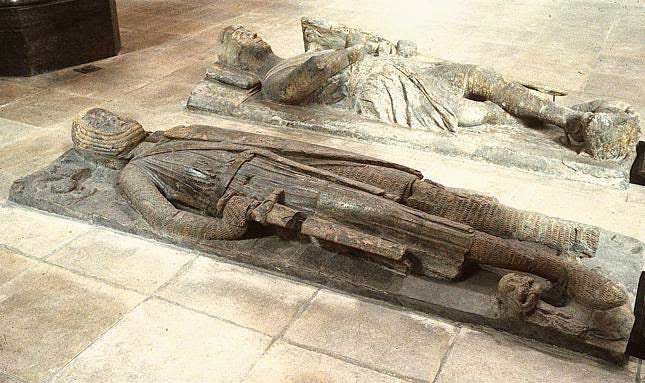The Cycle of Power
How the English Civilization Reinvents Governance Every 400 Years
Our history has never ended, is not dead. It yet lives on right before our very eyes. We would do well to realize and accept this.
For over a millennium, 1,200 years, the English Civilization has navigated a recurring pattern of upheaval and renewal—a 400-year Great Cycle that recalibrates the balance of power among the People, the Princes (elites), and Parliament (government). This rhythm, rooted in Alfred the Great’s foundational reforms, has shaped the evolution of governance from medieval England to modern democracies. As the United States grapples with a looming Constitutional Crisis, this ancient cycle offers both caution and hope.
1. Alfred the Great and the Birth of the Balance (9th Century)
The cycle begins with Alfred the Great (849–899), the Saxon king who unified fractured Anglo-Saxon kingdoms against Viking invasions. Alfred’s genius lay not only in military strategy but in institutionalizing a tripartite balance of power. He codified laws in the Doom Book, blending Christian ethics, Roman legal principles, the Danelaw and Germanic and British Isles customs to create a proto-common law system. His reforms established the Witan (a council of nobles and clergy) as a check on royal authority, while also empowering local shires to administer justice. This system acknowledged the roles of the monarch, elites, and free subjects—a precursor to later balances.
Supporting Context: Alfred’s emphasis on education, the use of the English language and of the rule of common law laid the groundwork for the English identity. His reign marked the first formal attempt to distribute power, ensuring no single entity could dominate unchecked—a principle that would echo through the centuries to this very day.
2. Magna Carta and the Barons’ Revolt (1215)
Four centuries later, King John’s tyrannical rule sparked a crisis. His heavy taxation, military failures, and disregard for feudal obligations alienated both barons and clergy. In 1215, rebel barons forced John to sign the Magna Carta, a charter that curtailed royal absolutism by establishing due process, property rights, and the principle that even the king was subject to the law. Crucially, it created a council of 25 barons to oversee the crown—a direct check on executive power.
While the Magna Carta initially served elite interests, its legacy expanded over time. By the 14th century, Parliament (derived from the French parler, “to speak”) emerged as a forum for broader representation, gradually incorporating knights and burgesses. The People, though not yet fully enfranchised, gained indirect protection through alliances between elites and evolving institutions.
Supporting Context: The Magna Carta’s Clause 39—“No free man shall be seized or imprisoned except by the lawful judgment of his equals”—became a cornerstone of Anglo-American jurisprudence, inspiring later documents like the U.S. Bill of Rights.
3. The English Civil War and Cromwell’s Republic (1642–1660)
By the 17th century, the Stuart kings’ claims of divine right reignited tensions. Charles I’s refusal to share power with a corrupted Parliament led to civil war (1642–1651). Parliamentarians, backed by Dutch bankers, merchants and Puritans, defeated royalists, culminating in Charles’s execution in 1649. Oliver Cromwell’s subsequent Commonwealth experiment abolished the monarchy, but his authoritarian rule as Lord Protector,, while justified in seeking to keep England free of Dutch influence and control through a corrupted and foreign owned Parliament, proved equally divisive.
The Restoration of 1660 and the (anything but) Glorious Revolution of 1688 ultimately cemented parliamentary sovereignty. The 1689 Bill of Rights formalized limits on the monarchy, requiring parliamentary consent for taxation and standing armies. Power now flowed through institutions, not individuals.
Supporting Context: Philosopher John Locke’s Two Treatises of Government (1689) justified this shift, arguing that rulers derive authority from the consent of the governed—a theory foundational to modern democracies.
4. The American Experiment and the Fourth Cycle (1776–Present)
The next 400-year pivot arrived with the American Revolution. The U.S. Constitution (1787) refined the balance further, separating powers into executive, legislative, and judicial branches. Yet today, the U.S.—the “dominant locus” of English civilization—faces its own reckoning. Political polarization, judicial overreach, foreign corrupted and ineffectual legislature and distrust in institutions mirror past crises.
We're now rapidly approaching the redefining and recodifying of the distribution of power, just as our ancestors have fought out every four hundred years for more than 1,2000 years, so far. As in earlier cycles, the People (via grassroots movements), Princes (corporate and political elites), and Parliament (government) vie to redefine their roles.
Supporting Context: Legal scholars like Harvard’s Noah Feldman argue that the U.S. is experiencing a “constitutional drift,” where informal norms (e.g., judicial deference, bipartisan compromise) erode faster than formal laws can adapt.
What Comes Next?
History suggests this fourth cycle will produce a new equilibrium. Past resolutions—common law, Magna Carta, parliamentary sovereignty—each expanded accountability. Today, reforms like ranked-choice voting, campaign finance limits, or judicial term limits could recalibrate power. The goal remains Alfred’s vision: one law for all, enforced by checks that prevent tyranny from any quarter.
As a Cold Civil War simmers in the United States, with ripples in all the lands of the former British Empire, the lesson of the 400-year Great Cycle is clear: conflict, though painful, is the furnace in which liberty is reforged. The English-speaking world’s greatest strength lies not in avoiding crises, but in emerging from them with systems more resilient than before.



Perhaps a 400 year Revolution & Resurgence ..... the Collapse of the USSA Empire will join Rome in history. Seems Unavoidable as the Current Reforms aren't enough to Restore the Lost USA Republic.